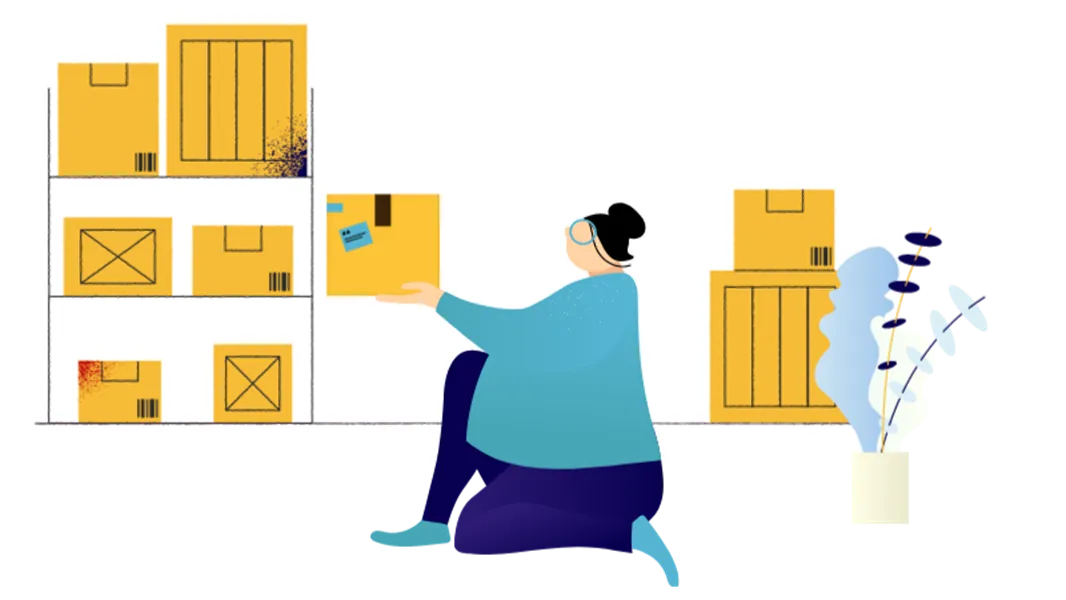Packaging up your handmade products
Written by Amy Monaghan
February 6th, 2021Other subjects...
small business successes gifts challenges small business share meet the maker news technology
Assuming you're someone setting up an online shop for the first time, you might have had a long journey to get to this point. Making products, testing them on friends and family, adjusting your concept, selling at craft fairs, and working out what you and your new business are all about. The one thing that's sometimes overlooked now that you're selling online is - how am I now going to package this to send to my customers?
The main purpose of your packaging is to protect your product as it’s shipped, but the parcel that the customer receives gives them an impression of you. So we’re keen to help you get it right.
Product and shipping packaging
There are two types of packaging to consider. The packaging that your product sits in, and the shipping packaging which needs to be robust for transit. The product packaging should contain any key information about the product that you need customers to have – this might be cleaning or safety instructions for example. It’s also your chance to include your shop logo and contact details too, if people are gifting your product then there’s another potential customer that you could be advertising to.
The external packaging needs to be fit for purpose and protect your product during shipping, but it’s another opportunity to give people a good feeling about your product. You may choose to include a little drawing on the front, or use coloured tape to differentiate it from other post. Keep in mind that packaging materials cost and you should consider this in your pricing to retain a margin, so don’t make things too elaborate too quickly. Make sure you get the right sized postal box to keep within Royal Mail’s postal pricing guidelines if you're using them for shipping as this will keep your costs down.
At the very least your parcel should be securely wrapped, with appropriate protection to ensure your product makes it through the postal system safely. Make yourself aware of any restrictions with your chosen courier and plan your packaging accordingly.
Packaging Materials
Many small businesses don’t consider the materials they use for their product packaging until they make their first sale, but as it’s another touch point for your customer it can encourage future sales. We’ve all purchased from a company who prides itself on its sustainability, only for the product to arrive in a huge plastic bag, and this can damage your brand image. Customers are becoming unimpressed with oversized packaging, and the chosen materials are important too. Let people know if you use materials that are easily recycled or are biodegradable. Some consumers are considering brand ideals and eco-consciousness in their purchasing decisions, so if you specifically choose your packaging for its eco-credentials then include this in your bio as people like to buy from makers sharing their ideals.
Having said that, customers are used to a certain level of quality, so if for example you use old cereal boxes as packaging materials, it’s worth including a note in the box to explain your choices. This tends to make people much more forgiving and can make it a plus point for your brand rather than an initial negative impression.
Ensure you take actions to minimise damages by carefully selecting the packaging you are using, and review customer complaints to identify any issues and be open to making changes. Some parts of certain products are more fragile than others, for example the edges and corners of books are often prone to damage, use that extra bit of packaging in the right area for protection. Use appropriate labelling if the product is fragile or needs to be kept upright and remember that couriers handle huge volumes of parcels a day so won’t take the care you would in handling.
If you're trialling new packaging it can be a good idea to send your product to yourself in the post. You'll get a better idea of how it travels and can save you any potentially embarrasing chats with customers that have received lots of bits through the letterbox.